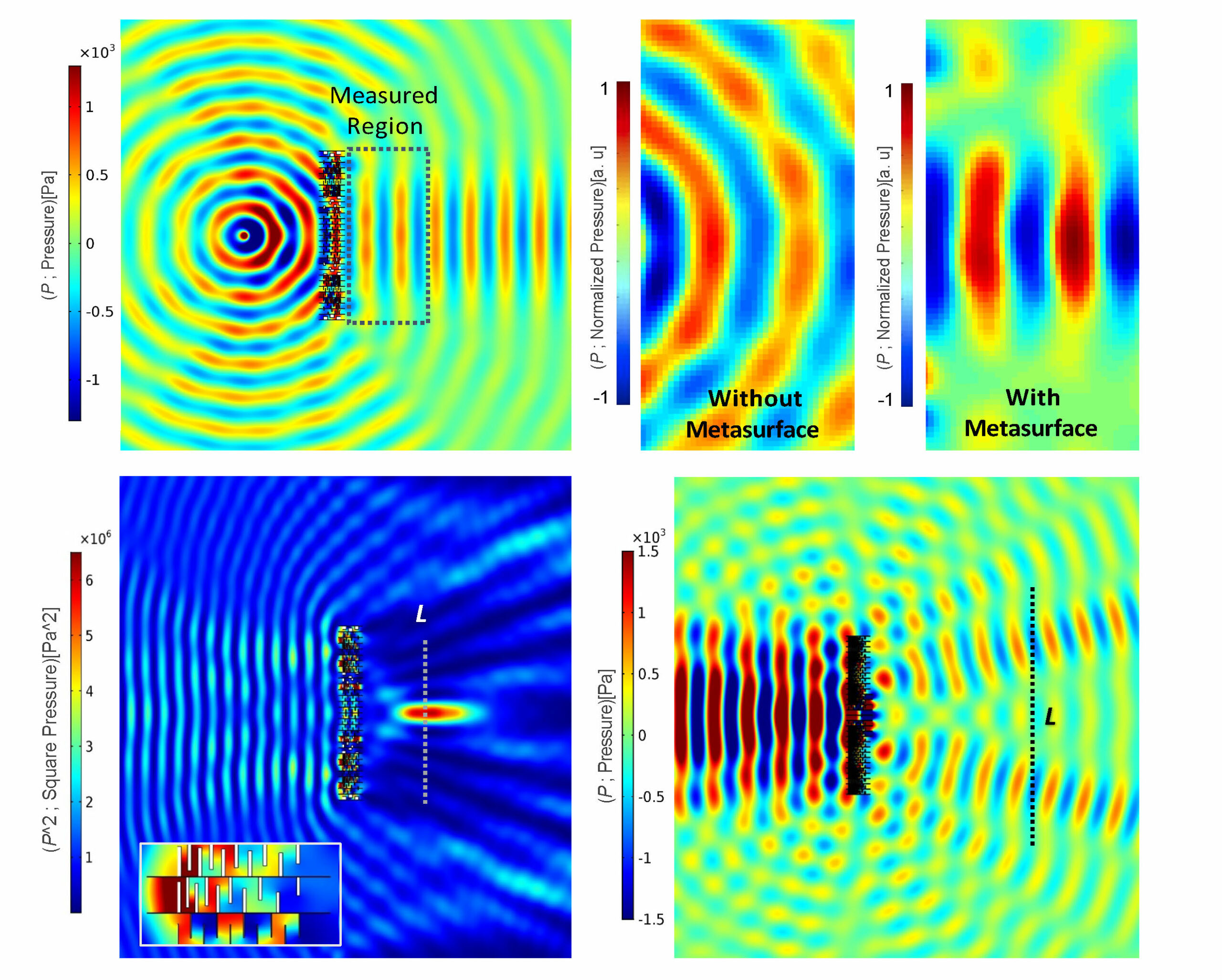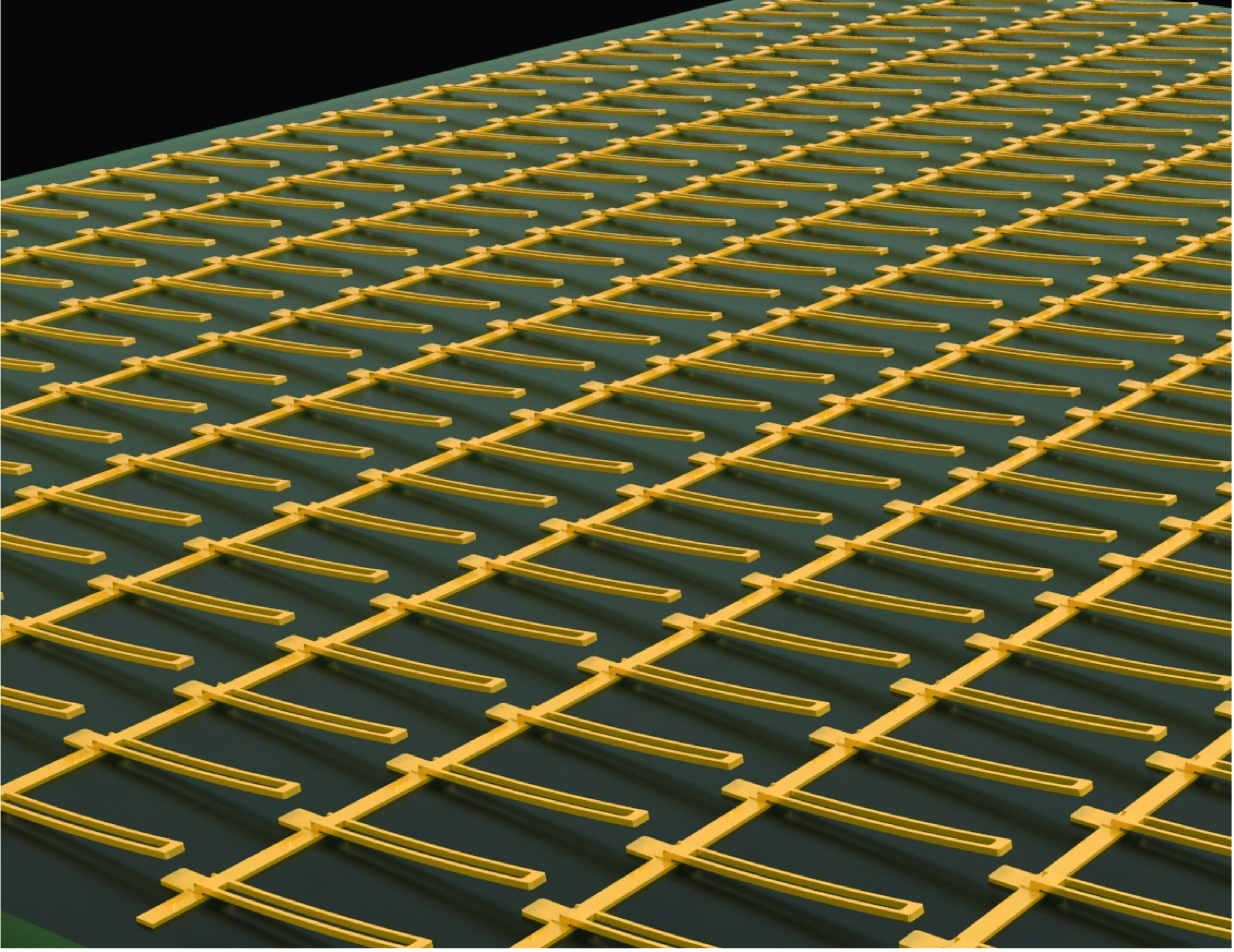Metamaterials Offer Communications Breakthroughs
Tiny, detailed structures manipulate sound and electromagnetic waves in new ways
By Liz Sheeley
When approaching a problem, the easiest solution can be to improve on the last iteration of the device or process that worked before. But when the limit to improvement is reached, new solutions must be discovered, and metamaterials offer a blank canvas to construct unique results. Metamaterials are tiny, 3D-millimeter-sized constructions that get their properties from their structures, not their base material, and are built to extend functionality beyond the limitations of natural materials.
Professor Xin Zhang (ME, ECE, BME, MSE) is an expert in the field of metamaterials and recently her lab has developed two new structures that can manipulate sound and electromagnetic waves. Although they are different, both offer two forms of wave control in their own spectrums and performance yet seen in other devices.
A metasurface, which is essentially a 2-D metamaterial, is designed with repeating pattern that can manipulate a wave. The acoustic metasurface’s design was based on the marriage between a well-known class of structures known as space-coiling metamaterials, and a classical acoustic element, a horn. By building an almost hybrid of these shapes, the engineers were able to simultaneously tune both the phase and amplitude of sound waves using one structure, which had never been done before. Their work has been published in Nature Communications.
“A wave has two components, phase and amplitude, and amplitude means how strong your wave is, and phase means the angle it first contacts the metamaterial,” says Reza Ghaffarivardavagh, a graduate student in Zhang’s lab and first author on the paper.
Ghaffarivardavagh says that only the phase of acoustic waves has been modulated using metasurfaces in the past. By modifying the space-coiling structure with the inspiration from the horn, they were able to gain full control over the wave to manipulate both the phase and amplitude. This allows researchers to split a wave into two waves moving in different directions, or concentrate a wave radiating circularly from a pinpoint to flow in a straight line, as illustrated respectively in the below images.

This new design has the capacity to shape myriad applications ranging from biomedical ultrasound to non-destructive testing and sonar. In the future, it could be used to control high-intensity ultrasound waves to focus on a very specific shape to destroy cancerous tissue without hurting viable tissue. Also, by being able to alter acoustic waves, engineers could control sonar and have it hit a specific target without the fear it could be picked up by another.
The second metamaterial manipulates waves from the terahertz region of the electromagnetic spectrum. Electromagnetic waves are anything from radiowaves to microwaves as well as visible light and X-rays, which all radiate at different frequencies, giving them unique properties.
The terahertz region sits between microwaves and infrared light on the spectrum and technology to operate on the terahertz frequency, also known as submillimeter radiation, is considerably less developed than other areas.
One reason for the terahertz gap is that the development of electronics has not reached the ability to receive and transmit such high frequency waves yet. The metamaterial developed in Zhang’s lab, a collaboration with Professor Richard Averitt’s group at the University of California – San Diego (formerly of BU physics), has the ability to tune the transmission of terahertz waves, which opens the door to closing the technology gap. The work, published in Optica and featured as the cover image, demonstrates a metasurface with an array of micro-cantilevers, or beams only attached on one end—picture a rung on a ladder with only one side of the ladder connected to it.
Engineers can choose what kind of wave the metamaterial will transmit and its properties by changing the amount of voltage they send through the material. Any substance that can conduct electricity has a resonant property, and by manipulating that property with voltage changes, the engineers can alter the transmitted wave.

When current is applied to the metamaterial, the cantilevers snap shut, thus forming a grid pattern and connecting the rung to the other side of the ladder; that transformation of the metamaterial increases its capacity to hold the electric charge flowing through it, otherwise known as its resonant property. Resonance is the phenomenon when vibrations from one source affect another—like when glass shatters from a very high frequency sound. And when the electrical charge is able to spread out, the metamaterial will then resonate at a lower frequency, and its resonant property changes—that change is how the terahertz wave is manipulated.
The device can also shift wave polarization from circular to linear, meaning that it can focus a wave in a particular direction. Currently only about 30 percent of the original power of the wave is transmitted, but altering the geometry of the metamaterial could increase that.
The reconfigurable metasurface will help bridge the terahertz gap and can be used to develop novel imaging and sensing terahertz technologies. Closing the gap could also allow for faster communications, like transmitting data faster than 4G or 5G data speeds on mobile electronics.
Professor Xin Zhang was also chosen as BU’s 2018 Innovator of the Year